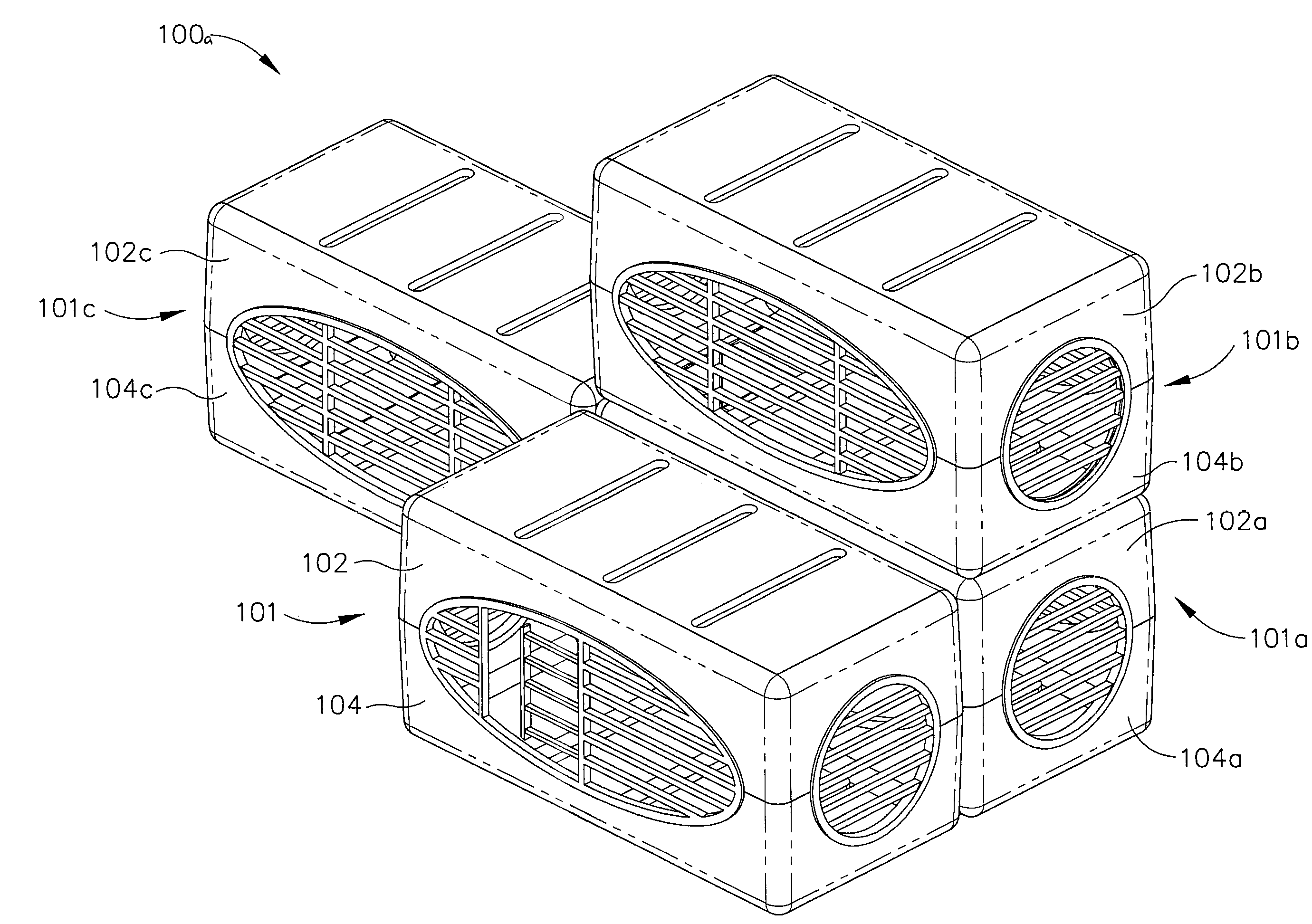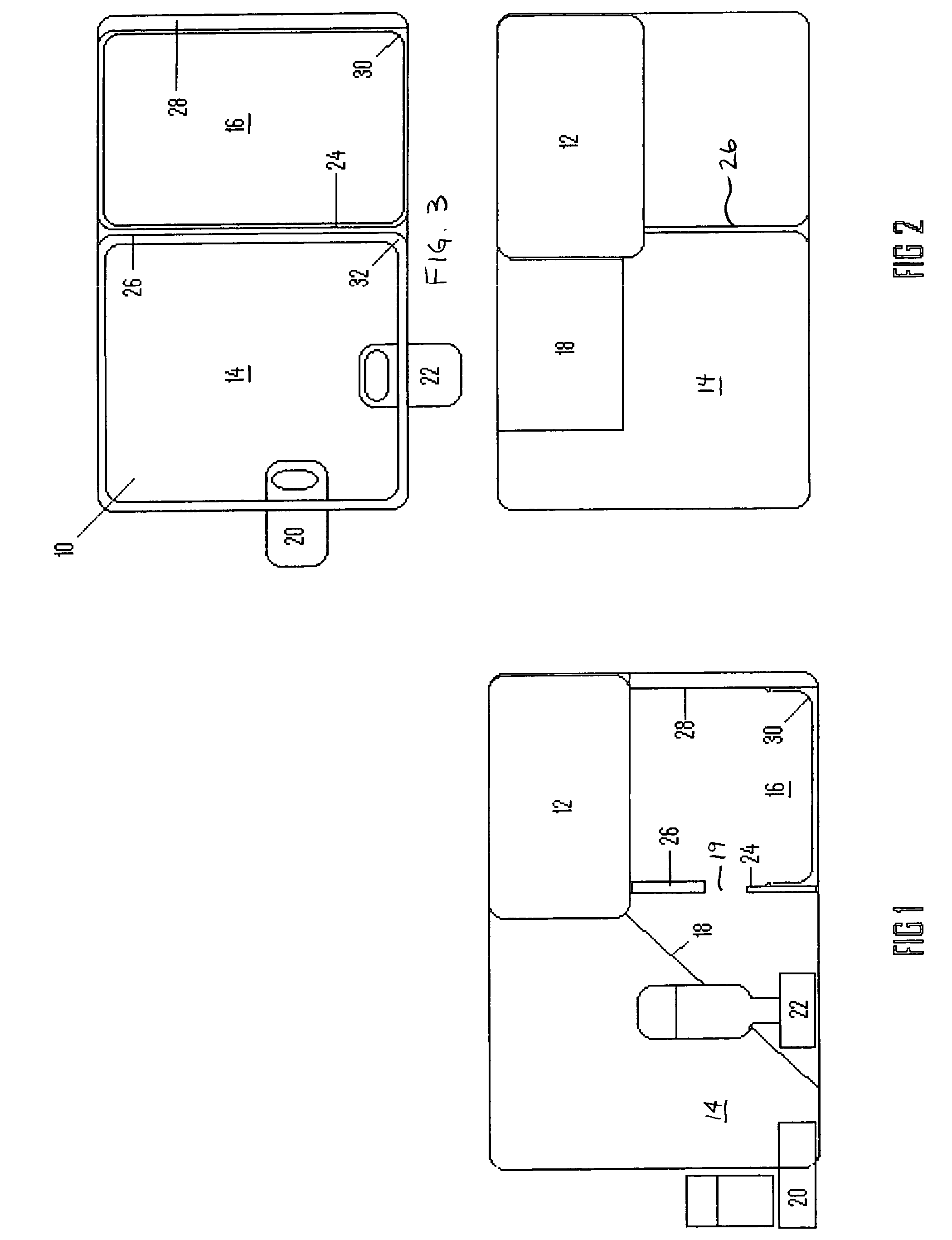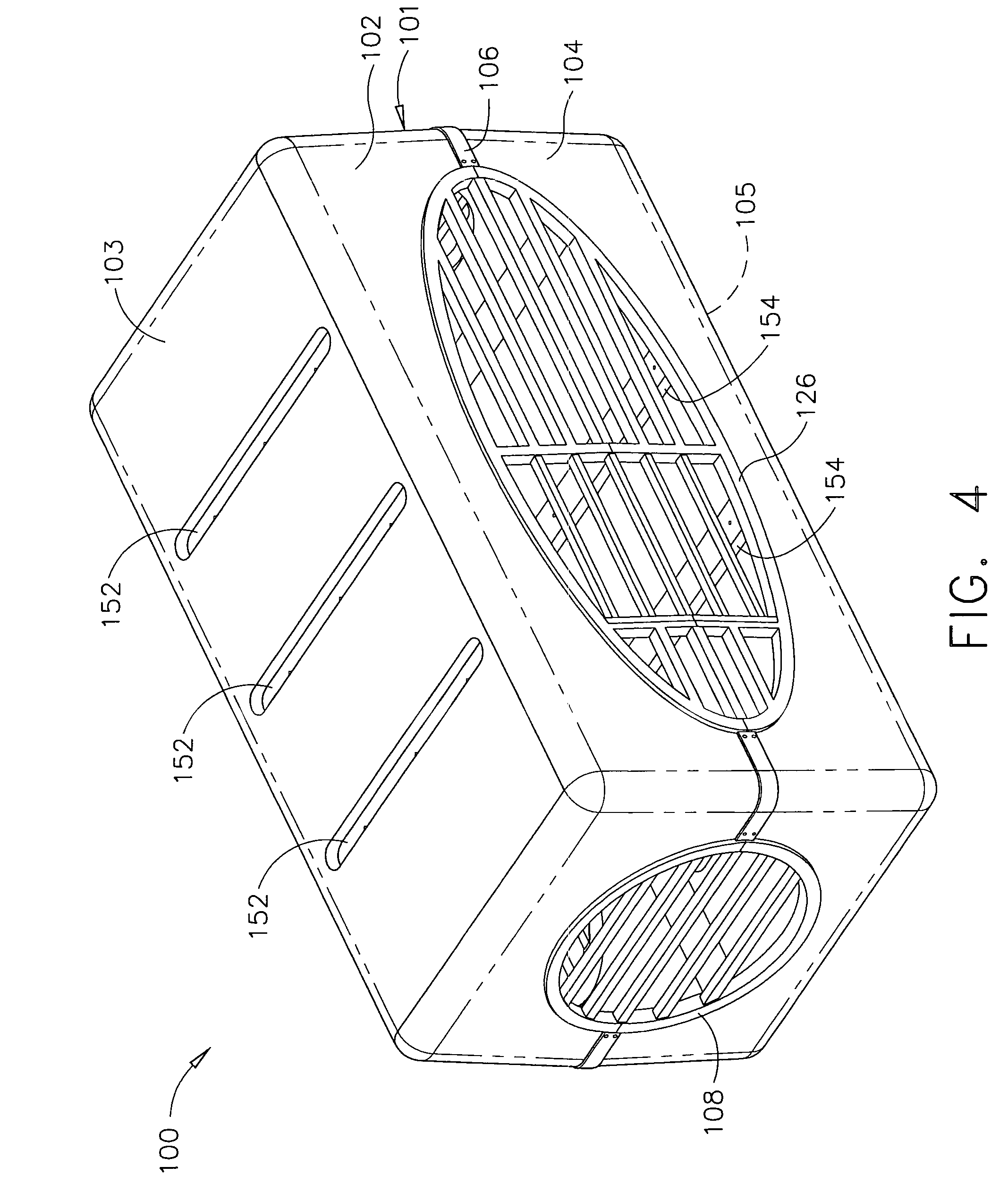Canine habitat
- Summary
- Abstract
- Description
- Claims
- Application Information
AI Technical Summary
Benefits of technology
Problems solved by technology
Method used
Image
Examples
embodiment 100
[0046]As shown in FIGS. 4-8, the embodiment 100 includes a habitat module 101. The upper module section 102 includes a plurality of indentations 152 on a planar face 103; the lower module section 104 includes a plurality of indentations 154 on a planar face 105. Indentations 152, 154 may include pre-drilled holes 156.
[0047]As shown in FIGS. 9-14, the module sections 107, 107a, 107b, 107c, 107d and 107e may be used as either upper or lower module sections in place of the upper module sections, 102, 104 to vary the openings in the habitat module 101. Shown in FIGS. 11-14, an opening 158 in surfaces 109b, 109c, 109d, and 109e is shown to be utilized if one module is used in a vertically stacked relationship with another module to allow for passage between two modules, as an opening 158 on any of modules sections 107b-e, used as a lower module section of an upper module, are aligned so as to complement an opening 158 on identical module sections 107b-3, used as a upper module section of...
second embodiment
[0053]a door grate 186 is shown in FIG. 26 which has engagement flanges 188, 190 and a plurality of horizontal tube members 192 and vertical door supports 194. Located on the vertical door supports 194 are a plurality of pins 198 which engage a removable section 200 at slots 202 in vertical ends 196. To provide an opening for an animal to enter into or exit the habitat 100, the removable section 200 is lifted upwardly and outwardly from a module to disengage the removable section 200 from the pins 198.
[0054]In operation, the embodiment 100, as shown in FIGS. 4-8, may have one module including a door grate 126 or 186 as the only opening to enter into and exit the module. Additional varieties of accessories such as additional openings and grates 108, 116, shelves 180, equipment 204 and trays 178 may be added to the one-module habitat 100. To expand the animal habitat 100, additional modules may be joined laterally and vertically to form an animal habitat such as the one shown in FIG. ...
PUM
 Login to View More
Login to View More Abstract
Description
Claims
Application Information
 Login to View More
Login to View More - R&D
- Intellectual Property
- Life Sciences
- Materials
- Tech Scout
- Unparalleled Data Quality
- Higher Quality Content
- 60% Fewer Hallucinations
Browse by: Latest US Patents, China's latest patents, Technical Efficacy Thesaurus, Application Domain, Technology Topic, Popular Technical Reports.
© 2025 PatSnap. All rights reserved.Legal|Privacy policy|Modern Slavery Act Transparency Statement|Sitemap|About US| Contact US: help@patsnap.com



